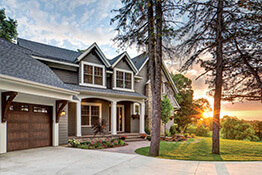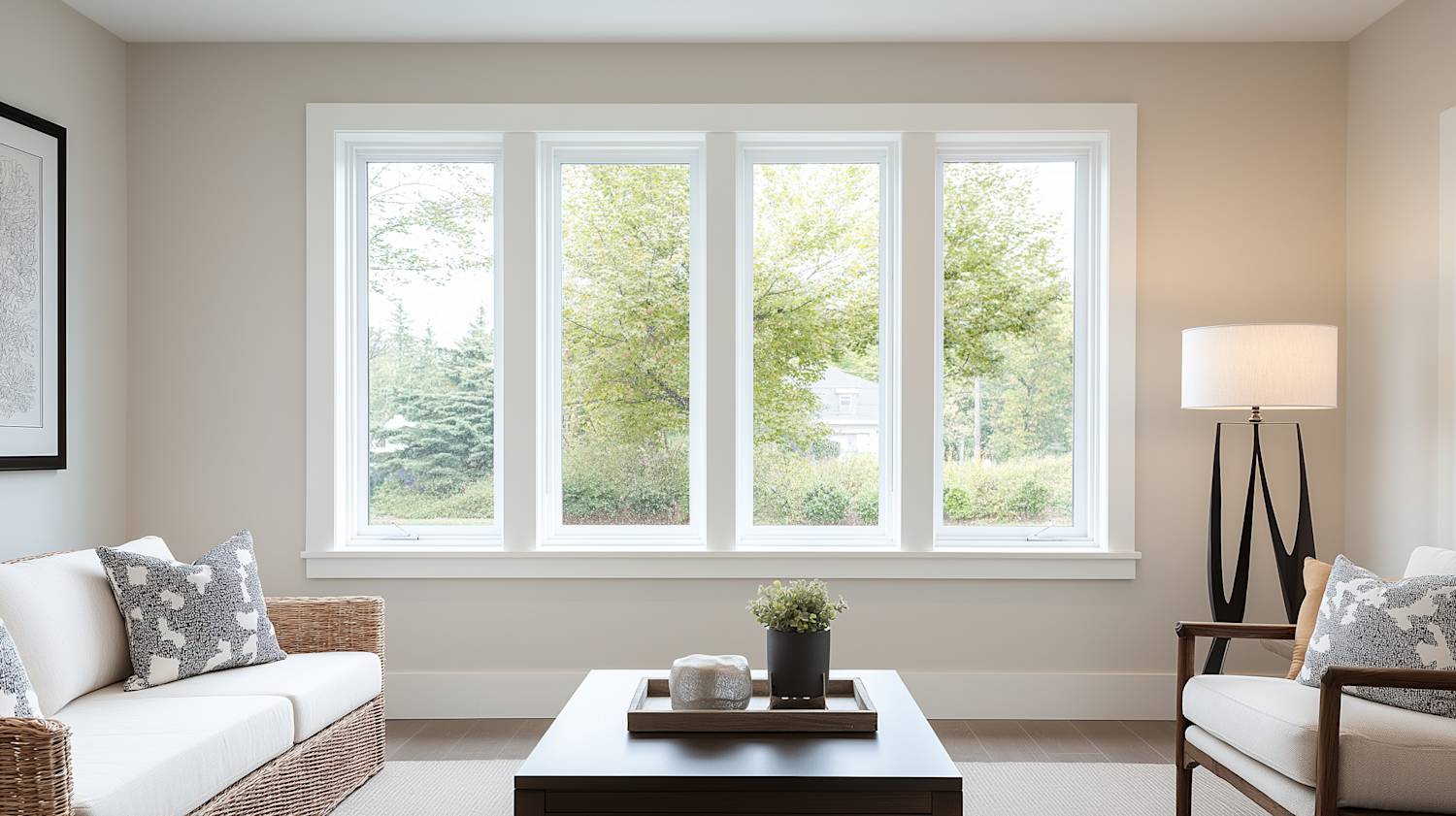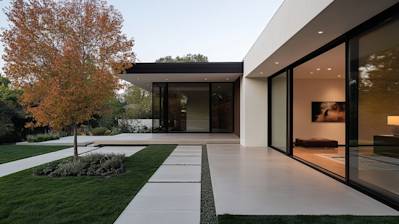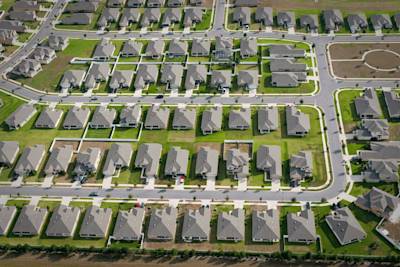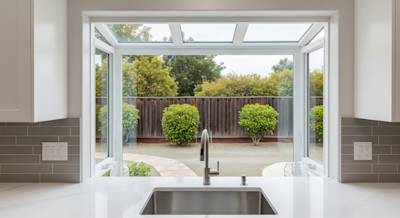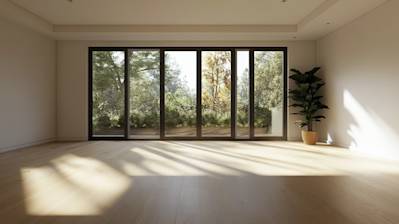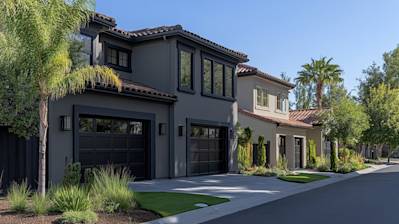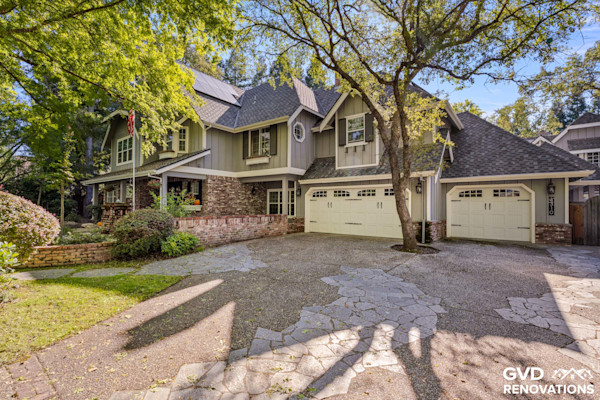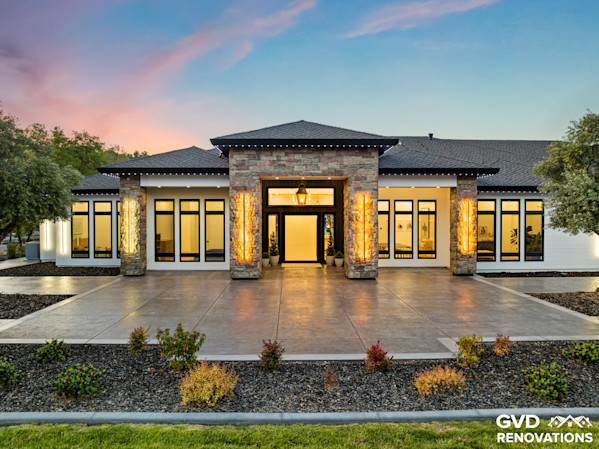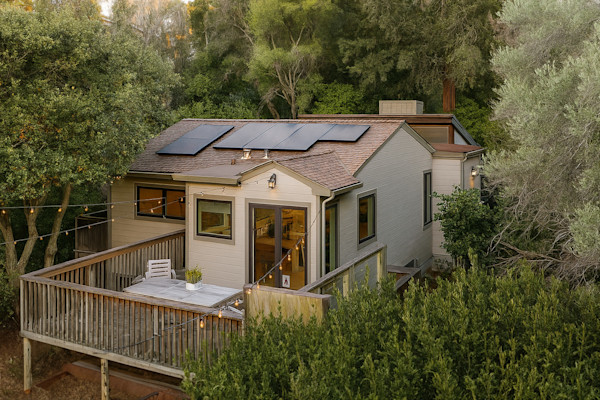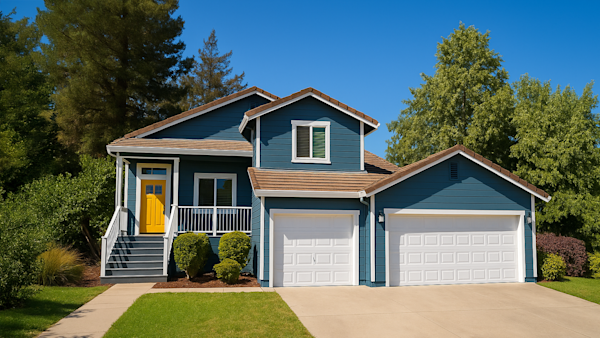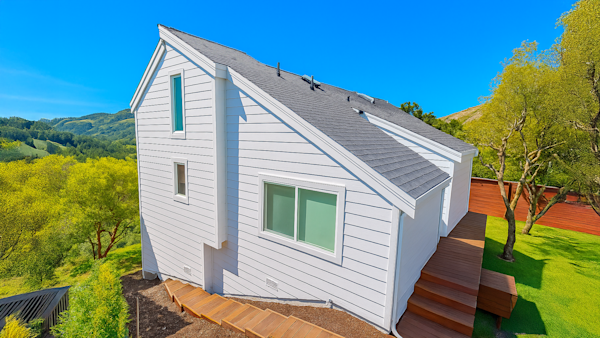An Overview of Window Sizes and Their Pricing
Considering the substantial impacts new windows can make in your life - from enhancing your home's aesthetic charm to the notable energy conservation - it's understandably a critical decision to make. There are several factors influencing window prices, and one key determinant is window size. Your window size plays a significant role in determining the total cost you will incur in your Sacramento window replacement project.
Factor Influencing Window Prices: Sizes
Standard Window Sizes
Standard window sizes often come with ready-made frames, making it economical, quicker, and seamless to install. Due to the easy availability and swift installation process, standard-sized windows can cost less compared to custom-made windows.
Here is a brief list of standard window sizes:
- Single-Hung or Double-Hung: their approximate height ranges from 36” to 72", and widths lie between 24” and 48".
- Sliding Windows: sizes range from 36” to 72”; in width, and from 24” to 60”; in height.
- Bay Windows: their width ranges approximately between 3'6" to 10'6", and heights vary between 3' to 6’6".
Custom Window Sizes
Custom window sizes are the way to go for homeowners looking to replace non-standard or old windows, heavily damaged windows or aiming for a unique look. They are tailor-made as per individual requirements, promising a perfect fit and distinct aesthetic appeal, thus often costing more than standard ones.
Categorizing Window Prices: By Size
To give you a precise perspective, consider this rough estimate of window prices by size:
- Small Windows (up to 3’ x 3’): $150 - $600
- Mid-sized Windows (up to 5’ x 5’): $300 - $1000
- Large Windows (larger than 5’ x 5’): $1000 and up
Remember, these prices usually include delivery and installation charges.
Other Factors Influencing Window Prices
While window size plays a significant role in pricing, the final cost of your new windows will also depend on:
- Window Type: Certain types (like bay, bow, or garden windows) usually cost more.
- Frame Material: Vinyl frames may be more cost-effective than wood or fiber-glass.
- Glazing Type: Triple glazing can enhance your window's energy efficiency but will raise costs.
Saving On Window Costs
Despite the substantial costs linked with window prices, there are ways to save on your new windows:
- Opt for Energy-Efficient Windows: While they cost more upfront, they can significantly decrease your energy bills in the long run thanks to their excellent insulation properties.
- Choose Standard Window Sizes: Unless necessary, stick to manufacturers’ standard sizes to avoid extra costs linked with customization.
- Do your Research: Shop around, get several quotes and opt for competitive pricing without compromising quality.

Frequently Asked Questions about Window Prices By Size
How do I decide on the appropriate window size for my property?
The appropriate window size largely depends on your property's structural characteristics and personal preferences. For example, bigger windows may enhance natural light and view but might not be the best for energy efficiency or privacy. Many homeowners choose to mix different window sizes to balance these aspects.
What cost am I looking at for standard-sized windows?
On average, standard-sized window prices can range from around $150 to $750 or even more per window. The exact cost largely depends on the type of the window, the manufacturer, and the materials used.
Is it cheaper to get custom-sized windows or standard-sized ones?
While custom-sized windows give you more flexibility for unique spaces or aesthetic purposes, they typically come with a higher price tag than standard-sized ones due to the extra labor and materials involved. However, they can offer a greater long-term value if standard-sized windows don't fit your space optimally.
How much more does it cost to increase the size of my windows?
When it comes to window prices by size, the cost increase can vary significantly based on the scale of the enlargement and the type of window. You're not only paying for a larger window, but changing window sizes also often involves adjusting the structure, which adds up to extra costs.
Which factor influences window prices more: size or materials?
Whilst size plays a crucial role in window pricing, the material is often an even greater cost determinant. For instance, wood is usually more expensive than vinyl. So, a smaller wooden window can potentially cost more than a larger vinyl one.
Do different types of windows have different prices by size?
Indeed. Each type of window (double hung, casement, sliding, etc.) comes with its own set of characteristics, manufacturing processes, and consequently, different price points. For instance, bay or bow windows are generally more expensive than single-hung or double-hung windows of the same size, as they are more complex in design and installation.
Will upgrading my windows to a larger size add value to my home?
Yes, upgrading to larger windows can definitely add value to your home. They can improve the aesthetics, allow more natural light, provide better views, and be more energy efficient, which can all help increase your home's resale value.
How much do installation costs vary by window size?
Installation costs can vary quite a bit depending on the window size. Larger, heavier, or more complex windows usually require more labor, which can increase the installation cost significantly.
Can I lower window prices by choosing different sizes?
Yes, depending on the situation. If replacing a large window with two smaller ones does not compromise your aesthetic preference, natural light, or view, you might be able to save some money by choosing the smaller sizes.
What is the typical price range for small-sized windows?
Small windows, typically those under 3x3 feet, can range in price from around $100 to $500. Again, the final price will depend on the type and material of the window, plus the installation costs.

Pros of Window Prices by Size
1. Easier Cost Estimation
Accurate Budgeting:
One of the pros of having window prices by size is it makes it easier to estimate the cost. When you know the size of your window, you can easily calculate the price and create a budget plan accordingly. This accelerates the replacement process as you do not have to manually reach out to vendors for quotations.
Material Considerations:
Prices by size also help assess material costs. For larger spaces, you might need more expensive, durable materials, leading to a higher cost. On the other hand, smaller windows might require less material, leading to a lower cost.
2. Simplifies Decision Making
Provides Comparisons:
Window prices by size enable homeowners to make comparisons before making a purchasing decision. Different sizes come with different price tags, and this can be crucial information when renovating or installing new windows. It allows you to compare the costs and benefits of different size windows within your budget.
Informs Design Choices:
Knowing the effect of window size on price can inform design choices. Does a smaller bay window or a larger picture window better suit your needs and budget? These types of decisions can be made more confidently when the price differences are transparent.
3. Encourages Energy Efficiency
Energy Savings:
Window sizes factor into a home's energy efficiency. Large windows may offer more natural light, potentially conserving energy during daylight hours. Smaller windows may reduce heat loss during cooler seasons, conserving heating energy. Informed decisions about window sizes and their costs can contribute to long-term energy savings.
Cons of Window Prices by Size
1. Doesn’t Account for All Factors
Quality and Type:
The downside of pricing windows by size is that it doesn’t necessarily account for the quality or type of material used. It’s possible for a smaller window made from high-quality materials to cost more than a larger window made from less durable ones.
Window Features:
Window prices based on size may not account for different window features like double panes, low-emissivity (Lo-E) coatings, or the type of gas used in insulated windows. This may result in additional costs not accounted for during the initial size-based pricing review.
2. Discounts & Promotions
Bulk Purchase:
Some retailers offer a discount for bulk window purchases, which might skew the cost equation. If you're buying numerous windows of varying sizes, you might find that the overall price-per-window is less than if you purchased a single window of one particular size.
3. Installation Costs
Cost Variation:
Window prices by size may not accurately reflect the cost of installation. Larger windows might require more time and complex procedures to install, hence a higher cost. Also, if your home has irregular window sizes, installation may become more complicated and costly.
4. Maintenance Costs
Damage Risk:
Larger windows may be more prone to damage, such as cracks or leaks, than smaller ones. While they may not drastically affect the initial price, potential repair or replacement costs down the line should be considered.
5. Misleading Budget Expectations
Hidden Costs:
Having the product price based solely on size may lead homeowners to underestimate the true cost of a window replacement project. Installation, maintenance, and potential repair costs may be overlooked, thus giving a misleading budget expectation.
Variations in window prices by size offer both advantages and challenges. They provide a good starting point for budgeting, comparisons, and informing design choices. However, these prices may not fully capture quality differences, window features, and installation challenges. It's important to get a comprehensive quote that includes all these factors, and not rely solely on size-based pricing.
Myths & Misconceptions About Window Prices by Size
The windows market can be a bit challenging to navigate, mainly due to the different factors that come into play when choosing the right window and calculating the cost. More often than not, consumers are caught up in various myths and misconceptions regarding window prices by size. Here, we will debunk some of these myths in a bid to assist you make informed decisions.
Myth 1: Larger Windows are Always More Expensive
The Misconception
The first and probably the most common myth is that larger windows are always much more expensive than their smaller counterparts. Many people believe that the price of a window is directly proportional to its size.
The Truth
However, this is not always the case. Yes, size is one of the factors that can impact a window’s price, but it is certainly not the only one. Other aspects, like the material, design, energy efficiency, and installation costs, also have a substantial role in determining the overall price of a window. Therefore, a smaller window could potentially cost more than a larger one if it comprises sophisticated features or is made from higher-quality materials.
Myth 2: Standard Size Windows are Cheaper
The Misconception
The belief here is that because standard size windows are produced in bulk, they tend to be cheaper than custom-made ones.
The Truth
While mass production can indeed reduce costs per unit, this isn't a rule set in stone when it comes to windows. Keep in mind, that the price may still differ depending on the material, design, and brand, even among the windows with standard dimensions.
Myth 3: All Small Windows are Affordable
The Misconception
The myth is rooted in the belief that all small windows are invariably low-priced due to their size.
The Truth
While it’s accurate to say that smaller sizes can reduce some material costs, it’s incorrect to assume that all small windows are cheap. High-quality materials, advanced features such as energy-efficiency, and complex designs can drive a small window's price beyond the cost of a basic larger one.
Myth 4: Bigger Windows Mean Bigger Energy Bills
The Misconception
Some consumers hold this erroneous belief that installing larger-sized windows will inherently lead to higher energy consumption due to increased exposure to external temperatures.
The Truth
In reality, window energy efficiency depends more on the type of the window and its features, not simply its size. A large window made from energy-efficient glass with proper insulation can reduce energy costs more effectively than a smaller, poorly insulated window.
Myth 5: Cost-Per-Square Foot is The Best Measure for Window Prices
The Misconception
Many people think that calculating the cost per square foot is the best way to compare the prices of different windows but this method could lead to misguided decisions.
The Truth
While helpful in some circumstances, cost-per-square-foot can oversimplify things. It does not consider aspects like the window's design, material, installation costs, and energy efficiency, which can significantly change the final price.
Understanding that these misconceptions are just myths can help you make an informed, valuable decision about your window purchase. It's essential to consider all the factors, not just size, when calculating the cost of your new windows. Always consult with a reputable window professional or retailer to get accurate and comprehensive information.
Summary
Knowing exactly how the window prices change by their size is a major part of making an informed purchasing decision. It's common to look for a balance between a size that suits your home and your budget. While larger windows let in more natural light and offer better views, they also tend to be pricier. So, always consider window prices by size and how getting a bigger or smaller window might affect your budget.
It's important to remember that even though smaller windows are generally less expensive, they might not always be the best fit for your needs. Finding the best window for your space involves more than just size and price. A smaller window might save you money upfront, but it might not provide the ventilation, view, or aesthetic appeal you desire. Remember, window prices by size aren't the only factor to consider, there is a balance here that needs to be met.
Lastly, keep in mind that cost isn't solely determined by the size of the window. Other variables like the window type, frame material, and glazing options also influence the price. A bedroom window, for instance, might be smaller but cost more due to privacy glass or energy-efficient options. While it’s quite useful to understand window prices by size, it's equally important to consider the other factors to ensure you're getting the best value for your money.
About GVD Renovations
GVD Renovations is a trusted, locally owned home renovation company based in Roseville, CA. Since our inception, we've been passionately committed to delivering eye-catching remodeling projects that enhance your living space and increase property value. Our expert team of craftsmen specializes in everything from kitchen remodels and bathroom upgrades to window replacements and siding installations. GVD Renovations takes great pride in providing top-tier customer service, unmatched craftsmanship and competitive pricing. Experience the GVD Renovations difference yourself and witness how we turn your dream spaces into reality!
This article is for general information only and not professional advice. Always consult a licensed contractor before making project decisions. Product details, specifications, or warranties may have changed since publication. Brand and product mentions reflect opinion, not endorsements or guarantees.
Tags: window prices, window size, price comparison,
